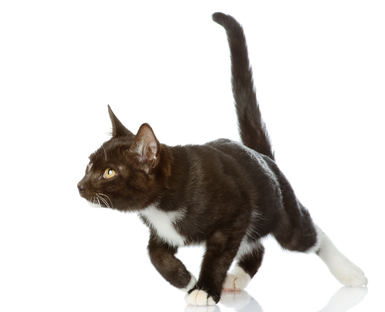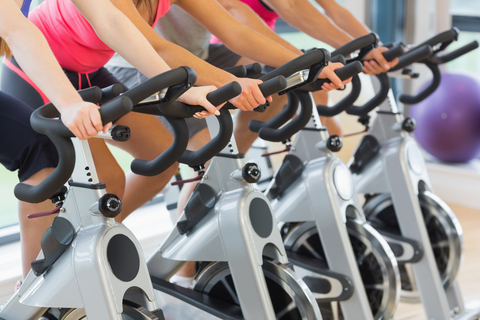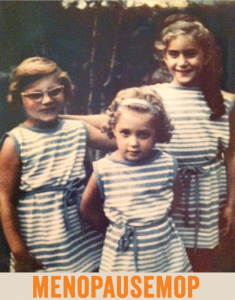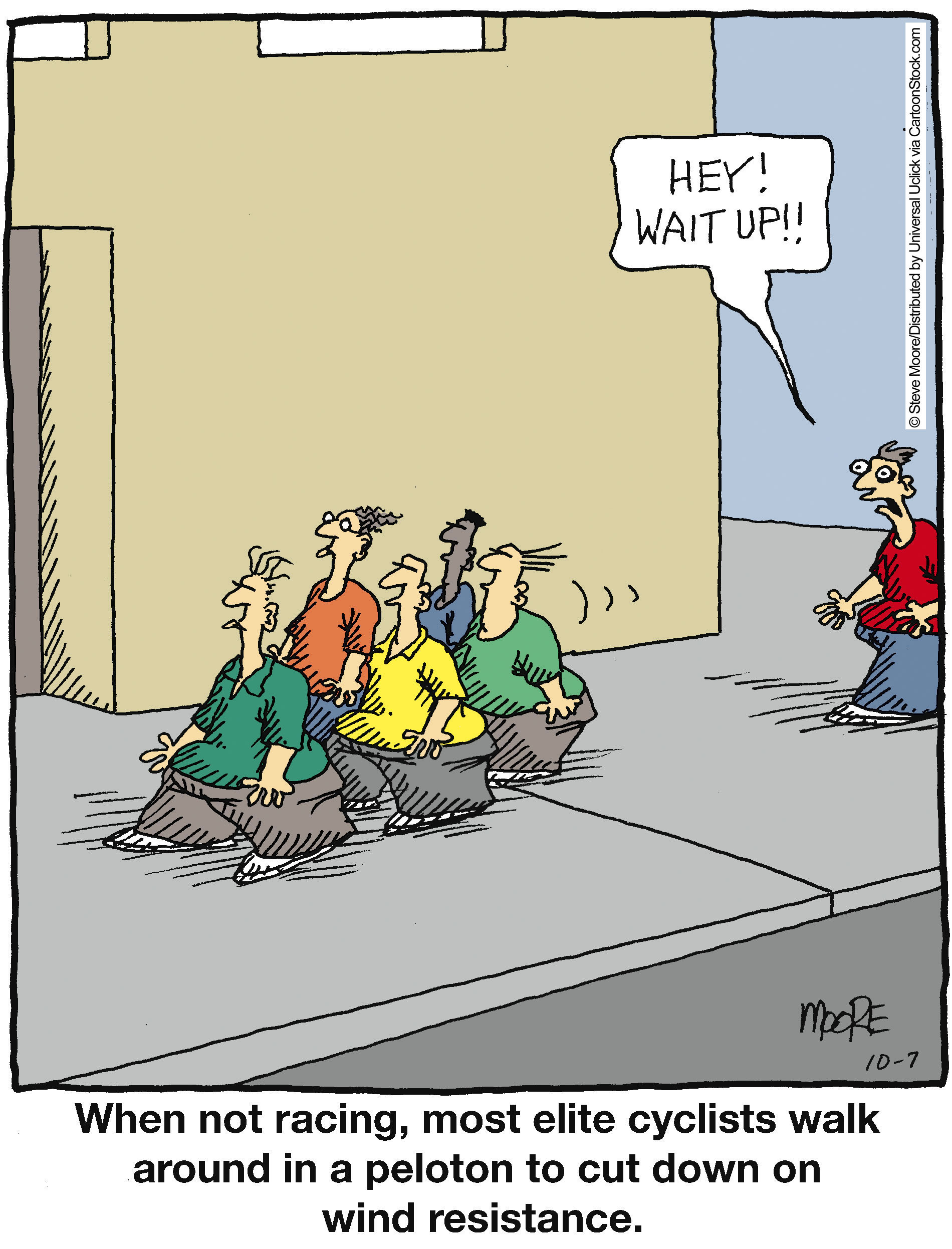Guyside: Chocoholic?
Oh, chocolate, you undo me.
I have a thing for chocolate. I love to eat it. Normally, this wouldn’t be a problem, right? Most people love chocolate. In the UK, people eat nearly 25 pounds of it every year. Here in North America, the average Canadian or US citizen eats lots less – about 11 pounds or so, but that’s still a lot.I figure if I quit, that average would go down by a pound or so.
With the gourmetization of everything, you’d think that this would be a good thing – consuming dark chocolate, with all those anti-oxidants and flavonoids is supposed to be good for you. But I have a taste – a craving – for the milky stuff. No nuts, no nougat, just good old milk chocolate. Perhaps it comes all the way from my childhood, when I used to have a big glass of Nestlé Quik for breakfast.
So when I think about how much chocolate I consume – bars, ice cream, gelato, etc. – I know that I’m consuming more of it than is likely healthy for me. Surely there are people out there that share this problem.
The key to me is that if I recognize this as a problem, then it is, at least for me.
So I decided to look for some tips to break this down a little bit, because I don’t necessarily want to go cold-turkey-total-abstinence-never-shall-chocolate-touch-my-lips-again. I want to be able to enjoy it in more moderation.
A Harvard medical blog suggests that if you note these three characteristics, then you’re behaving in an addictive way:
- intense craving
- loss of control over the object of that craving
- continued use or engagement despite bad consequences.
Chocolate, the post tells us, stimulates brain responses similar to those produced by “real” drugs. Now, I haven’t sold my body yet for a Hershey bar, but I don’t like the craving. And I don’t plan on entering a rehab program. So what do the big heads at Harvard suggest?
They focus on a mindfulness-related technique: “The next time you feel the pull of chocolate, pay attention to it. But instead of automatically reaching for your preferred candy bar or fudgy ice cream, take a few moments to actively decide whether or not to indulge the desire. If you decide to have chocolate, focus on each bite, slowly, to extend the pleasure in it. If you decide to wait, enjoy the notion that you’re taking good care of yourself. (You can take the same approach to alcohol, cigarettes, and food in general if you are trying to lose weight.)”
I’m gonna give this a try. What techniques do you use to control food consumption?
Read MorePhysical activity for prevention: how much, how often, how long?
Physical activity. You can’t beat it for preserving bone, maintaining weight and boosting endorphins and mood. Lord knows that there are reams and reams of data demonstrating its value. But confusion remains with regard to how much, how often and how long, i.e. what do you need to do to prevent physical and cognitive decline during menopause and thereafter?
A new systematic review of the literature appearing online in Menopause journal attempts to answer this very question. In it, the authors searched the literature published between the years 2009 and 2014 specifically as it related to physical activity and women’s physical and mental health and ultimately settled on 21 studies. The findings?
- In postmenopause, body composition and higher physical activity levels are associated with better physical functioning however, because frailty may actually begin in midlife, developing or maintaing a health lifestyle during the middle years is imperative.
- The higher the level of physical activity, the more significant the decrease in the odds of dying from any cause. Importantly, this remained true even after the researchers took into account factors like age, education, ethnicity, depression and comorbidities. Conversely, women who were more sedentary had a 98% higher risk of dying than their physically active peers!
- Exercises that improved cardiorespiratory capacity had the greatest impact on physical health. Cardiorespiratory capacity refers to the ability of the heart and lungs to deliver oxygen and remove CO2 to/from the skeletal muscles during physical activity. Here, higher is better. The question that remains unanswered is whether or not the prescription for cardiorespiratory boosting exercise change as we grown older?
- A key difficulty with activity is adherence. Consistently, women report that they abandon exercise due to time constraints, or personal, cultural or environmental factors.
- All of the studies found that physical activity was associated with lower rates of cognitive decline but the magnitude of this effect was inconsistent. Also unclear was the impact of physical activity on health-related quality of life.
The bottom line is that you need to MOVE, often, intensely and frequently. Do exercises that boost your cardiorespiratory capacity, e.g. jogging, running, swimming, cycling, kettlebells or interval training. And lose the excuses; make the time now or you’ll suffer later. It truly IS an either/or!
Read More
Mop this!
I receive solicitations regularly on Flashfree and to be honest, I turn down most of them. But I paid attention to this one because I liked the concept behind the product. What product, you ask?
The Menopause Mop, of course!
Look, I am not a huge fan of the name and for many women, it may provoke images of a sweaty, wet mop that never dries out no matter how many times it’s been wrung. However, when one of the three ‘Hot Flash Sistas sent me a note explaining that she and her siblings — all currently in their 50s and experiencing symptoms — started to experience hot flashes, they (and I) decided to get busy. She says that “the idea sprang from needing and wanting something attractive, functional and fun for women going through menopause.” Hence, the Menopause Mop was born.
Characterized as ‘neat, discreet and taking the heat,’ the Menopause Mop is really a 100% cotton handkerchief that is custom-sized for women and hand sewn by Cousin Sista Judy (a cousin who attended the Fashion Institute of Technology in NYC). It comes with a nifty little breathable mesh bag and can be easily accessed to dab away excess perspiration when you are feeling the heat. Even better, a portion of the proceeds from The Menopause Mop go toward supporting the Ovarian Cancer Foundation. The Mops appear to be reasonably priced at $15 and come in four colors: Orange Orange, Polka Dot Purple, Pretty in Pink and Gardeny Green.
Moniker aside, these three Sistas are trying to take off in the menopause space.
Mop this and show some love.
[Disclosure: I was not offered monetary or product compensation for this post. I simply like the idea and I love that they are giving back and paying forward.]
Read MoreFacing up to hair
Apparently, just as many mainstream outlets caught on to the fact that male “hipsters” had fully embraced the idea of thick, luxuriant beards, some researchers are suggesting that “peak beard” may have come and gone. For one beard-oil (yes, that’s a thing) entrepreneur in my city, this may be a tragedy (but given the usual lag in Ottawa catching trends, he’s probably got some time).
But it got me thinking about men and facial hair. I’m not sure we’ve ever lived in a more diverse era of facial hair than we do now — at least in my lifetime. In the 1950s, clean-shaven was the way to go. The sixties brought on long hair for men (with the exception, perhaps, of Merle Haggard or Jim Stafford) and the hippie era. Before I could grow my own facial hair, back in the 1970s, it was all about sideburns and mustaches for most men. Stars like Burt Reynolds, Frank Zappa, Tom Selleck (and even Cheech of Cheech and Chong!) were sporting serious ‘taches.

A photo from the 2012 World Beard Championships. CC-licenced by Flickr user: https://www.flickr.com/photos/rhymeswithsausage/
Then we got to the 80s and 90s, dark times for facial hair aficionados. Yes, Don Johnson brought us the “Miami Vice” look, which included oh-so-carefully coiffed stubble to go with that wrinkly linen jacket. But more of us were trying to figure out how much hairspray to use to get that Flock of Seagulls thing going than trying to figure out how to keep our beards up.
But now? Now, it’s a free-for-all. You’ve got your hipsters. You’ve got your neckbeards. You’ve got your ironic moustaches. You’ve got muttonchops (thanks, Wolverine). You’ve got “urban beardsmen.” There seems to be no “rules” anymore, except, of course, for those men for whom facial hair is part of religious practice (such as Sikhs).
So what’s a guy to do? Well, I’ve got a few rules that are nothing more than my own rules. I’ve had facial hair — either a beard or a goatee — for most of my life. I wear it … because I like it. I didn’t have anyone tell me it was best for my face type, or anything else (Well, my partner, who claims our relationship will end if I go barefaced). I usually keep it pretty neat and clean, because that’s what I like. I have some wee sideburns, but not too much; I don’t keep the goatee stuff too long, because I don’t like that. I keep the moustache quite close too, because one of the things I hate most in the world is having my moustache hairs get in my mouth. But that’s me.
Are there “rules?” Probably not. Use your own judgement. Unless you’ve got crappy judgement, in which case you should use someone else’s. Think about the world you inhabit. Are you a corporate lawyer? A full hipster beard is probably not gonna fly. Are you a bike mechanic? You’ll probably be fired if you DON’T have some sort of extreme facial hair (and multiple tattoos, but that’s another subject). I don’t want to be a downer, but sometimes individual choices can have consequences when they collide with the outside world. I like my facial hair well enough, but if it stood between me and my dream job, I’d consider letting it go.
Like most things in life, what you grow on your face is governed by what you like and what society likes. Find your own balance.
Read MoreDo women truly need to supplement testosterone levels?
 Testosterone is a hot topic for men. But evidently, it’s an equal opportunity hormone, designed to boost low libido one woman, one cream application at a time. But what is it about testosterone that makes its use in menopausal women questionable if downright unhealthy?
Testosterone is a hot topic for men. But evidently, it’s an equal opportunity hormone, designed to boost low libido one woman, one cream application at a time. But what is it about testosterone that makes its use in menopausal women questionable if downright unhealthy?
The levels, that’s what.
I’ve written about testosterone before and you can look up the archives via this link. The upshot is that for both men and women, testosterone therapy is oversold as a panacea for just about everything from distress about aging to sexual desire to bone, heart and mental health. Wow! Quite the Fountain, no?!
However, while transdermal (through the skin) testosterone is preferable (it avoids metabolism by the liver and promotes steady blood levels of the hormone), the patch has gotten the boot both in this country and overseas, and implants are no longer available. LibiGel, a topical cream was also denied market entry by the FDA. The result has been frequent prescribing of compounded testosterone in both genders.
Mind you, Allopathic practitioners for the most part shun compounded products, claiming safety issues and the lack of regulation. And in some cases, they are absolutely correct (do you recall the New England compounding crisis?). More recently, the North American Menopause Society (NAMS) issued a press release knocking compounded prescriptions, noting that they may deliver excess levels of testosterone thereby “producing untoward effects.” For example, too much testosterone may lead to depression, promote unwanted acne and hair growth, enlarge the clitoris, deepen the voice, produce aggression and boost cholesterol levels. The answer? According to NAMS, the answer may lie in an Australian formulation — AndroFeme — that was recently tested in seven healthy, postmenopausal women.
In a study published ahead of print in the journal Menopause, the researchers report that this 1% testosterone cream, applied 5 mg daily for 21 days and then immediately thereafter, 10 mg daily for 21 days, resulted in peak blood levels of testosterone that were in the normal range; while the 5 mg dose raised blood levels only slightly above normal, the 10 mg dose raised it to a higher level (double the upper limit). Moreover, apparently neither dose level had an impact on estrogen levels or sex-hormone binding globulin, a protein that binds to the sex hormones and determines how much of them remain available.
So, what’s the lowdown? Theoretically, the Australians have arrived at an acceptable testosterone dose for women with a safe delivery system. They report that it was well tolerated but did not qualify what this means. If you read the NAMS press release, the organization is basically promoting a pharmaceutical grade product over compounded agents even though the study was conducted in a mere seven women. Seven women do not a conclusion make…ever.
How much testosterone is too much for women after menopause? As of today, any amount might be too much until more data are available. Buyer, beware. T is for thwart and the time to put low T to bedis now.
Read MoreGuyside: ride like the…
My partner in crime, Bob LeDrew just completed a two day ride to Niagara Falls and he’s out getting his legs back. He’ll be back in the Guyside saddle next Wednesday!
Read More
Skinning the cholesterol cat
 It’s difficult to pin down the reasons underlying an increasing risk for heart disease as women age. Menopause in particular is associated with a rapid increase in blood LDL cholesterol and triglycerides levels and declines in HDL cholesterol levels. And, while some researchers claim that hormones are at-play, others suggest that it is increased risk is associated with a gradual decline of cells that act to repair and replenish circulation. Regardless, it is well accepted that high levels of LDL can increase the risk of atherosclerosis and that even early signs of high cholesterol levels should raise a few red flags in the health department.
It’s difficult to pin down the reasons underlying an increasing risk for heart disease as women age. Menopause in particular is associated with a rapid increase in blood LDL cholesterol and triglycerides levels and declines in HDL cholesterol levels. And, while some researchers claim that hormones are at-play, others suggest that it is increased risk is associated with a gradual decline of cells that act to repair and replenish circulation. Regardless, it is well accepted that high levels of LDL can increase the risk of atherosclerosis and that even early signs of high cholesterol levels should raise a few red flags in the health department.
Most recently, the American Heart Association and American College of Cardiology issued controversial recommendations that statins should be used in anyone who has a greater than 7.5% chance of having a heart attack or stroke or developing heart disease over the following 10 year period. However, lifestyle modification, i.e. adopting a healthy diet, engaging in regular physical activity, controlling diabetes and high blood pressure and weight loss may be an effective answer in some people. For others, there is new evidence suggesting that the Chinese herbs Danshen (Salvia miltiorrhiza) and Gegen (Radix pueraidae), aka D&G, may help to lower LDL, improve the functioning of the lining of the heart and lower carotid intima thickness (the thickness of the two innermost walls of the artery). These two herb roots are more commonly known as red sage and kudzu, respectfully, and previously clinical trials have demonstrated their potential for control of heart pain and other cardiac symptoms.
Traditional Chinese Medicine is often disputed in allopathic medicine and many practitioners believe that its role in disease is unproven. Nevertheless, the 12-month, randomized controlled study among 165 postmenopausal women who took either daily D&G or placebo may put some of these challenges to rest. All of the study participants had what is considered borderline high cholesterol at the study’s start. And, while D&G had no discernible impact on blood pressure, women taking D&G experienced significant declines in carotid intima-media thickness compared to women taking placebo. This benefit appeared to be even greater after more than six months of treatment.
Additionally, the researchers reported a ‘remarkable’ decline in both LDL and total cholesterol levels compared to placebo (6.9% versus 3.2% LDL, 5.8% versus 3.4%, total cholesterol) even though these figures did not reach statistical significance. They also found that when they evaluated quality of life, a significant decline in mental health scores was observed in the placebo group while a significant increase in general health scores was observed among women taking D&G.
Almost as important, no significant side effects were reported.
The researchers say that they cannot identify the reasons underlying these benefits and that molecular studies are needed to explain the biology underlying the improvements. However, it is clear from this small study that there a different ways to skin the cat called high cholesterol and that statins aren’t the only game in town.
Stay tuned!
Read More








